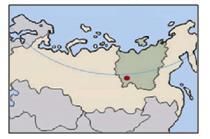UPSC Exam > UPSC Tests > Geography for UPSC CSE > Test: Minerals And Rocks - UPSC MCQ
Test: Minerals And Rocks - UPSC MCQ
Test Description
10 Questions MCQ Test Geography for UPSC CSE - Test: Minerals And Rocks
Test: Minerals And Rocks for UPSC 2025 is part of Geography for UPSC CSE preparation. The Test: Minerals And Rocks questions and answers have been
prepared according to the UPSC exam syllabus.The Test: Minerals And Rocks MCQs are made for UPSC 2025 Exam. Find important
definitions, questions, notes, meanings, examples, exercises, MCQs and online tests for Test: Minerals And Rocks below.
Solutions of Test: Minerals And Rocks questions in English are available as part of our Geography for UPSC CSE for UPSC & Test: Minerals And Rocks solutions in
Hindi for Geography for UPSC CSE course. Download more important topics, notes, lectures and mock
test series for UPSC Exam by signing up for free. Attempt Test: Minerals And Rocks | 10 questions in 10 minutes | Mock test for UPSC preparation | Free important questions MCQ to study Geography for UPSC CSE for UPSC Exam | Download free PDF with solutions
Detailed Solution for Test: Minerals And Rocks - Question 1
Detailed Solution for Test: Minerals And Rocks - Question 2
Test: Minerals And Rocks - Question 3
Which mineral group is abundantly found in the earth’s crust?
Detailed Solution for Test: Minerals And Rocks - Question 3
Detailed Solution for Test: Minerals And Rocks - Question 4
Test: Minerals And Rocks - Question 5
Rocks that were originally either sedimentary, igneous or metamorphic and have been changed further by heat and pressure are called:
Detailed Solution for Test: Minerals And Rocks - Question 5
Test: Minerals And Rocks - Question 6
Which process involves the transformation of sediment deposits into sedimentary rocks characterized by distinct layers?
Detailed Solution for Test: Minerals And Rocks - Question 6
Detailed Solution for Test: Minerals And Rocks - Question 7
Detailed Solution for Test: Minerals And Rocks - Question 8
Test: Minerals And Rocks - Question 9
The minerals that do not contain metal contend are known as
Detailed Solution for Test: Minerals And Rocks - Question 9
Detailed Solution for Test: Minerals And Rocks - Question 10
|
263 videos|873 docs|232 tests
|
Information about Test: Minerals And Rocks Page
In this test you can find the Exam questions for Test: Minerals And Rocks solved & explained in the simplest way possible.
Besides giving Questions and answers for Test: Minerals And Rocks, EduRev gives you an ample number of Online tests for practice




















